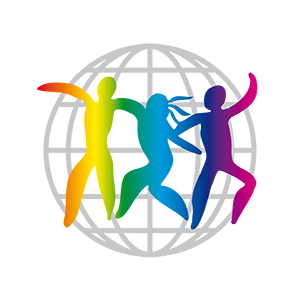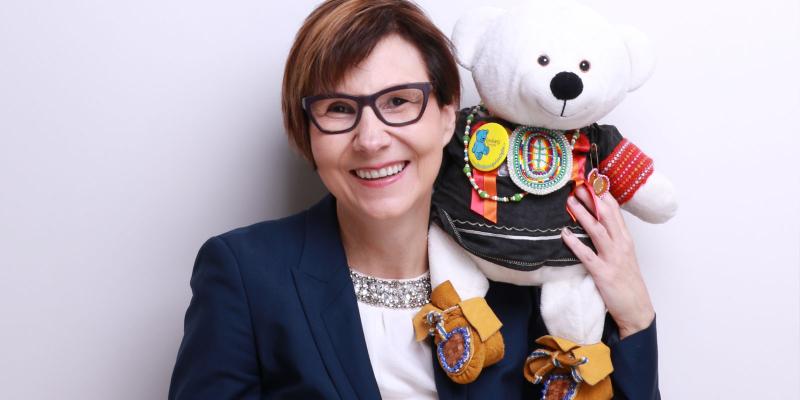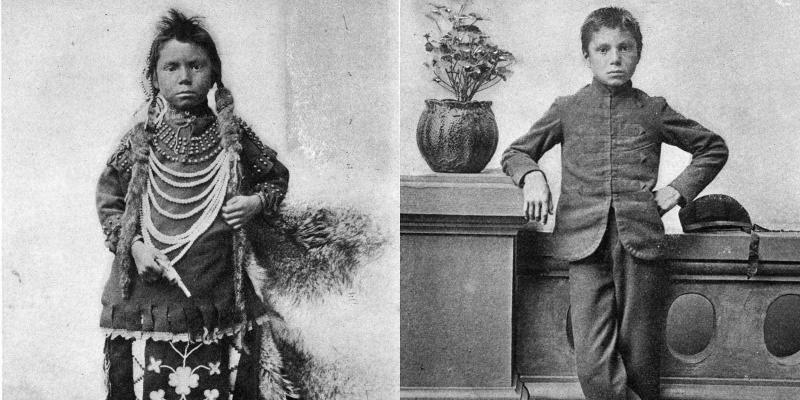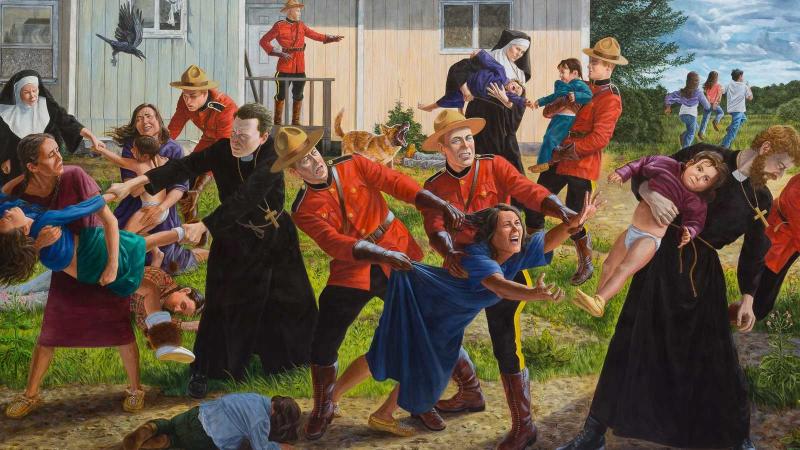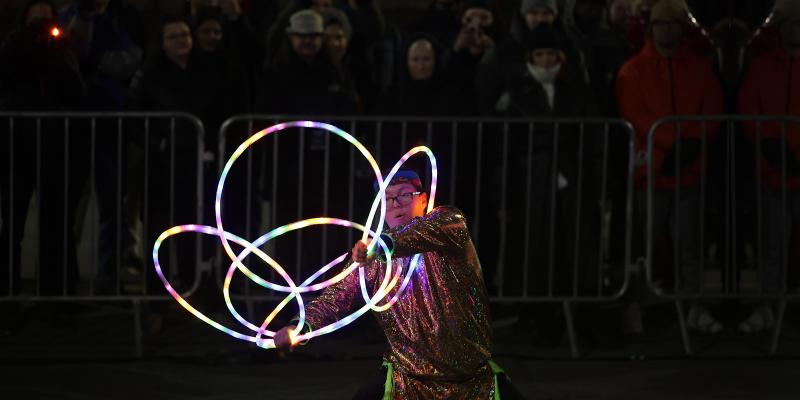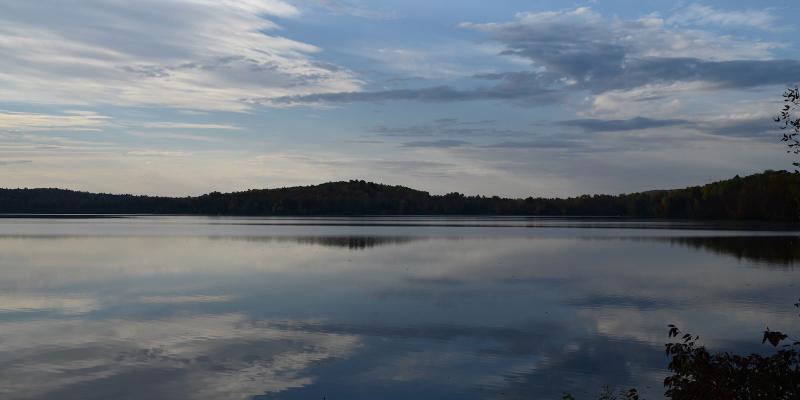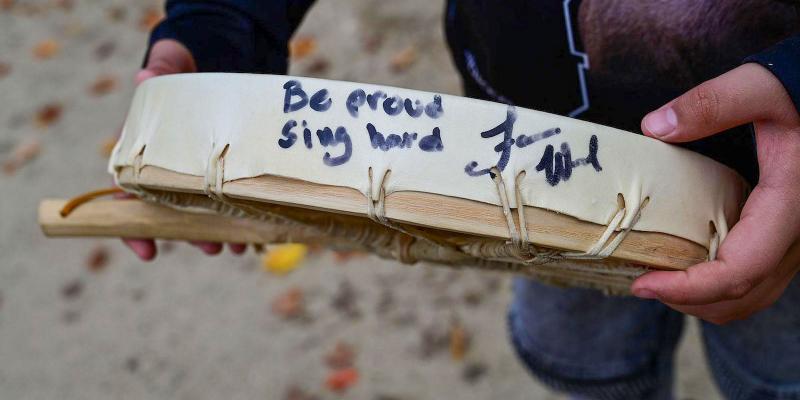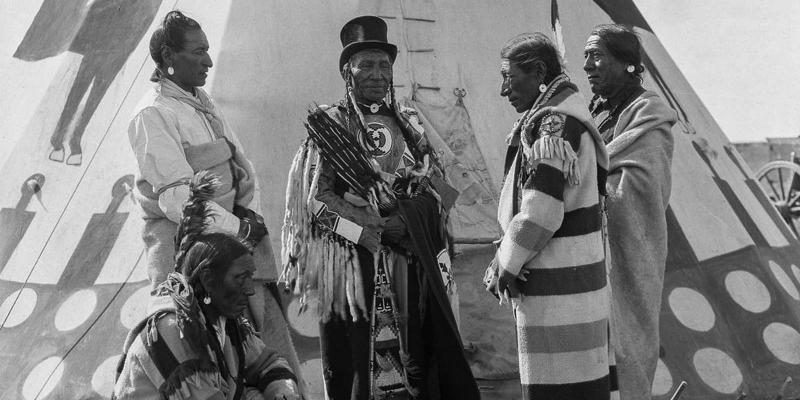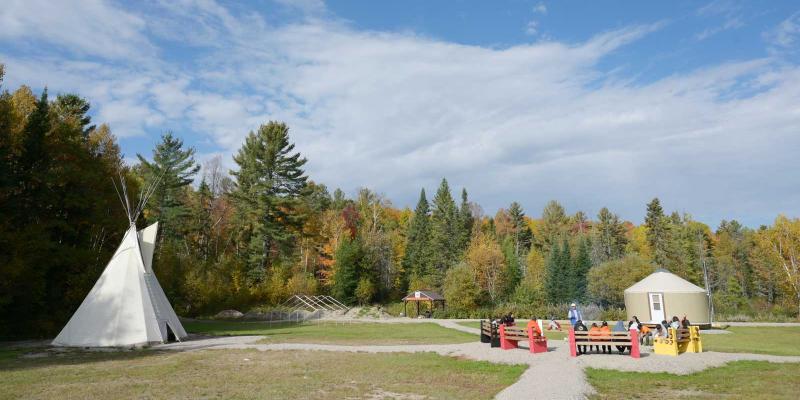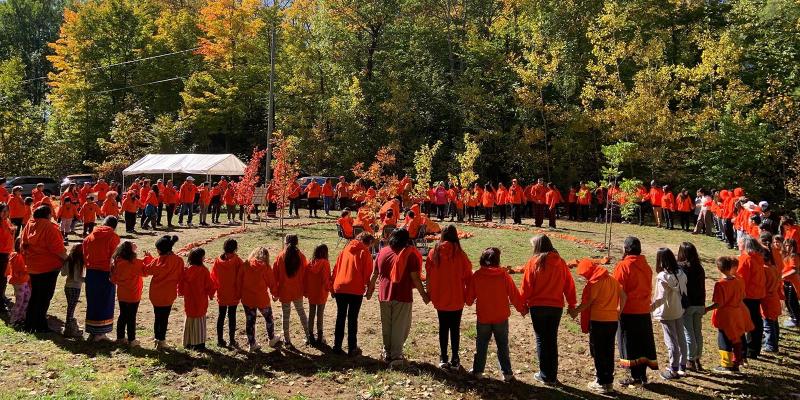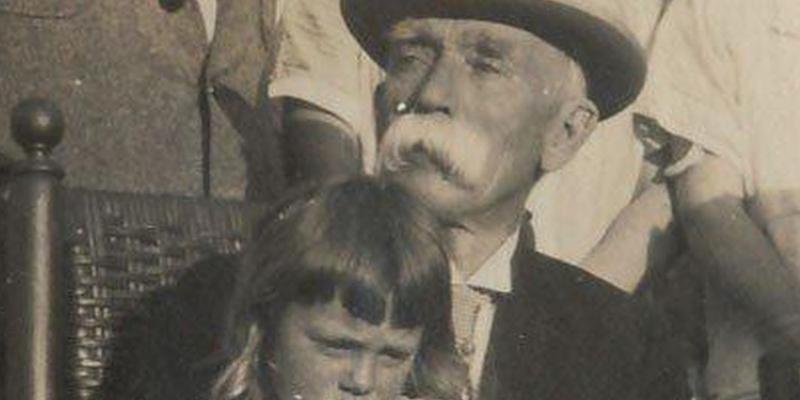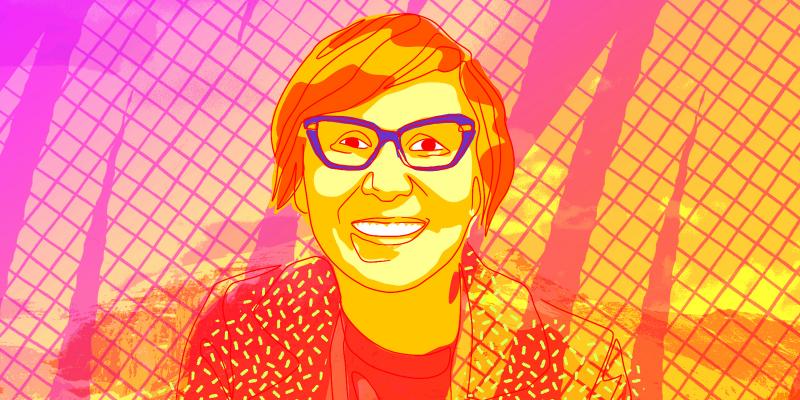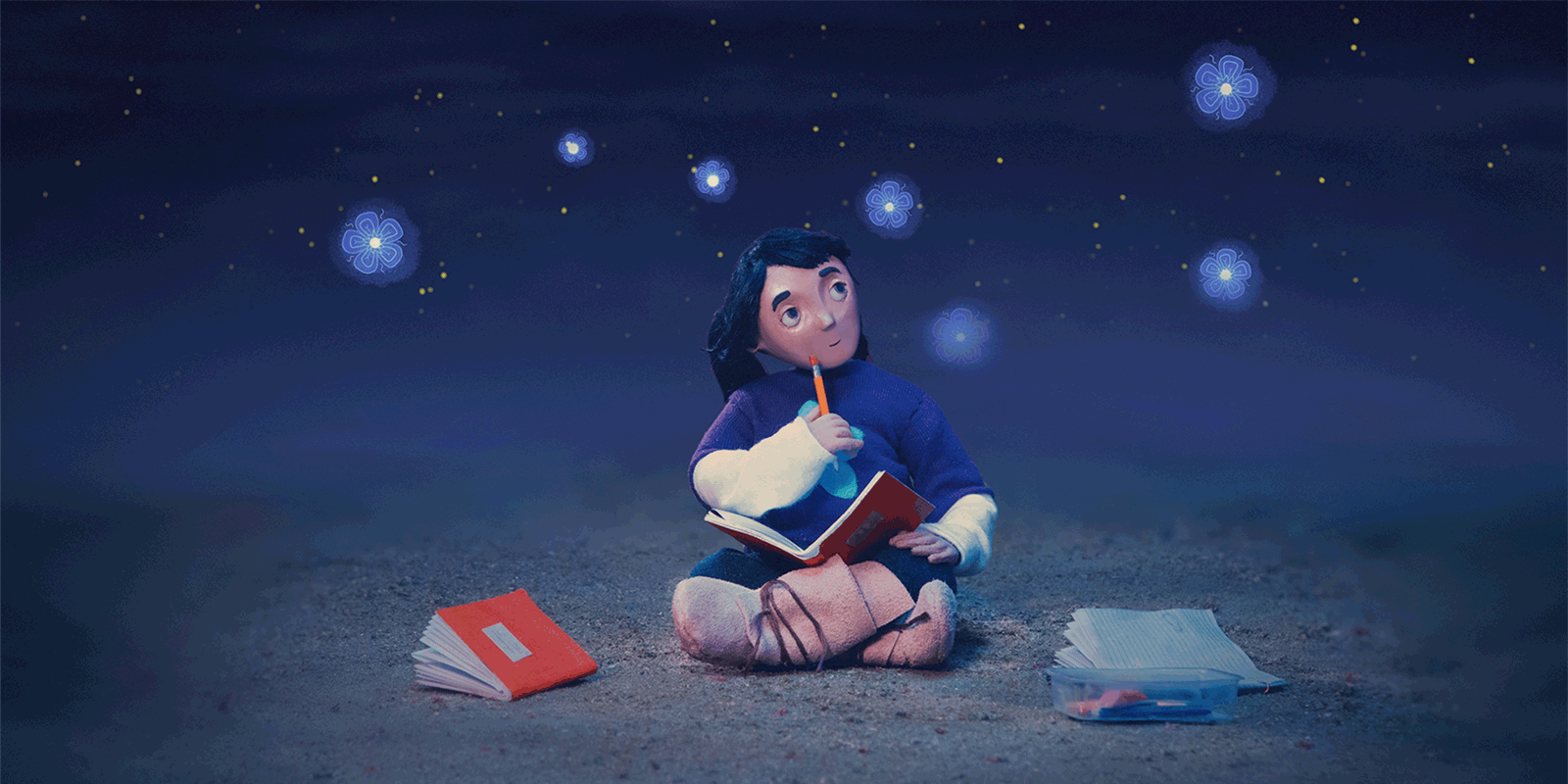
Shannen dreamed of a proper school in her little town of Attawapiskat in northern Canada. But instead she had a classroom in ice-cold portable trailers, on contaminated ground. So Shannen told the minister responsible at that time what he should do, and became the leader of Students helping Students, the biggest ever child-led campaign in Canada.
To get to Attawapiskat, which means “people of the parting of the rocks” in Shannen’s language, Cree, you have to travel as far north as you can and then take a small plane. There are hardly any roads here, apart from in the winter when the lakes and rivers freeze, and cars and buses can travel on the ice.
Shannen Koostachin was a First Nations child of the Cree community. When she looked up to the night sky and saw the stars, it was exactly like her forefathers had done for thousands of years. That made her happy, but she was also often sad because she couldn’t go to a good school.
The elders had been passing on knowledge for thousands of years from their forefathers, people and animals who lived before them. But to be a lawyer, which was Shannen’s dream, she needed a good education. And she wasn’t getting that in Attawapiskat.
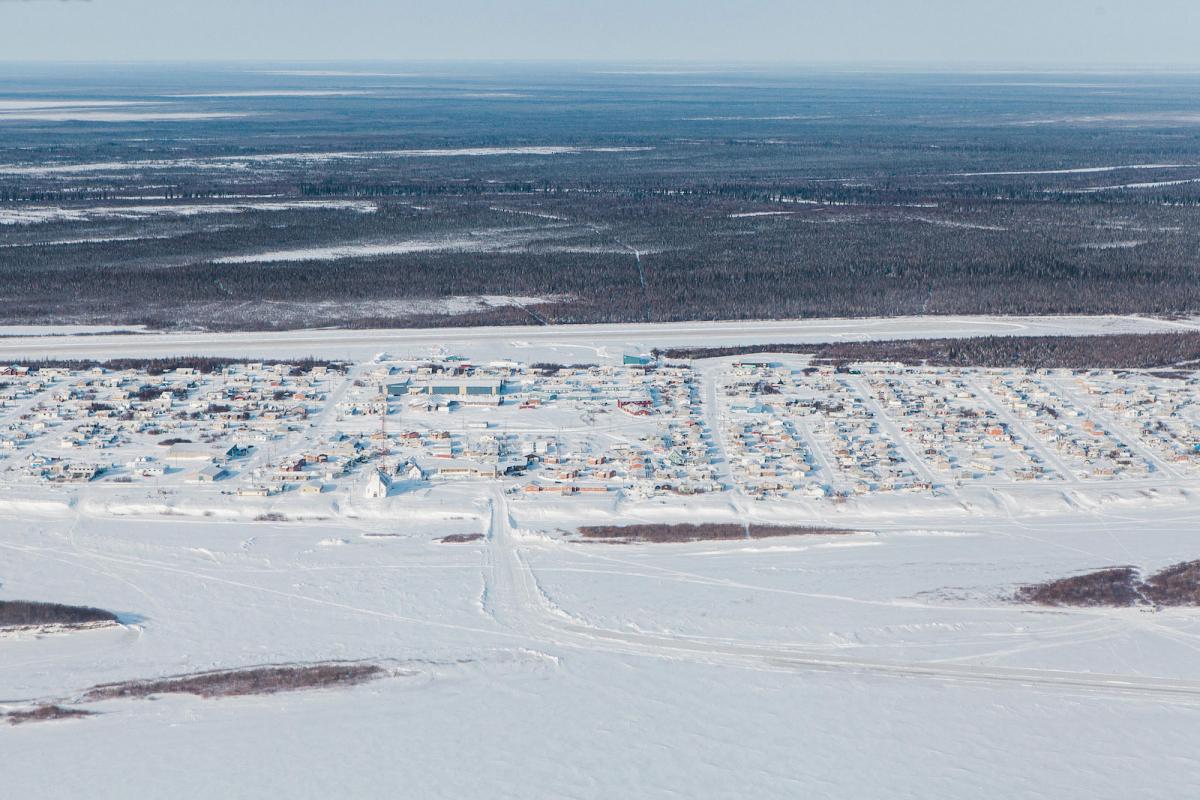
Contaminated school
A few decades before Shannen was born, Attawapiskat got its first proper school, with bright classrooms, a gym and colourful walls. Everyone was happy. But before long, the children and teachers started getting headaches, and they felt tired and unwell. The parents complained, but it took twenty years before the authorities investigated the ground underneath the school and found a leaking pipe there. It must have cracked when the school was being built. Tens of thousands of litres of foul-smelling fuel had leaked out over the years, contaminating the ground and making the children sick. The school was closed, and grey portables were put up in the schoolyard. The politicians said that it was a temporary solution, but nine years on the children were still waiting for their new school.Mice and mould
By the time Shannen started school, the poorly insulated trailers were already in a bad state. The winters in Attawapiskat are extremely cold, and sometimes ice would form on the walls inside the classroom. Shannen and the other children had to put on thick jackets, hats and gloves several times a day when they were changing classroom or going to the toilet. When there was a power cut, like after a severe storm, there was no heating or light.The teachers tried their best, but they didn’t have enough books or materials, because the school wasn’t given anywhere near enough money by the government. It got so bad that children as young as nine started to drop out of school. Shannen knew why:

Hard to feel pride
“It’s hard to feel pride when your classrooms are cold, and the mice run over our lunches. It’s hard to feel like you could have a chance to grow up to be somebody important when you don’t have proper resources like libraries and science labs. You know that kids in other communities have proper schools. So you begin to feel as if you are a child who doesn’t count for anything … Imagine a child who feels they have no future even at that young age school is a time for hopes and dreams of the future. Every kid deserves this!”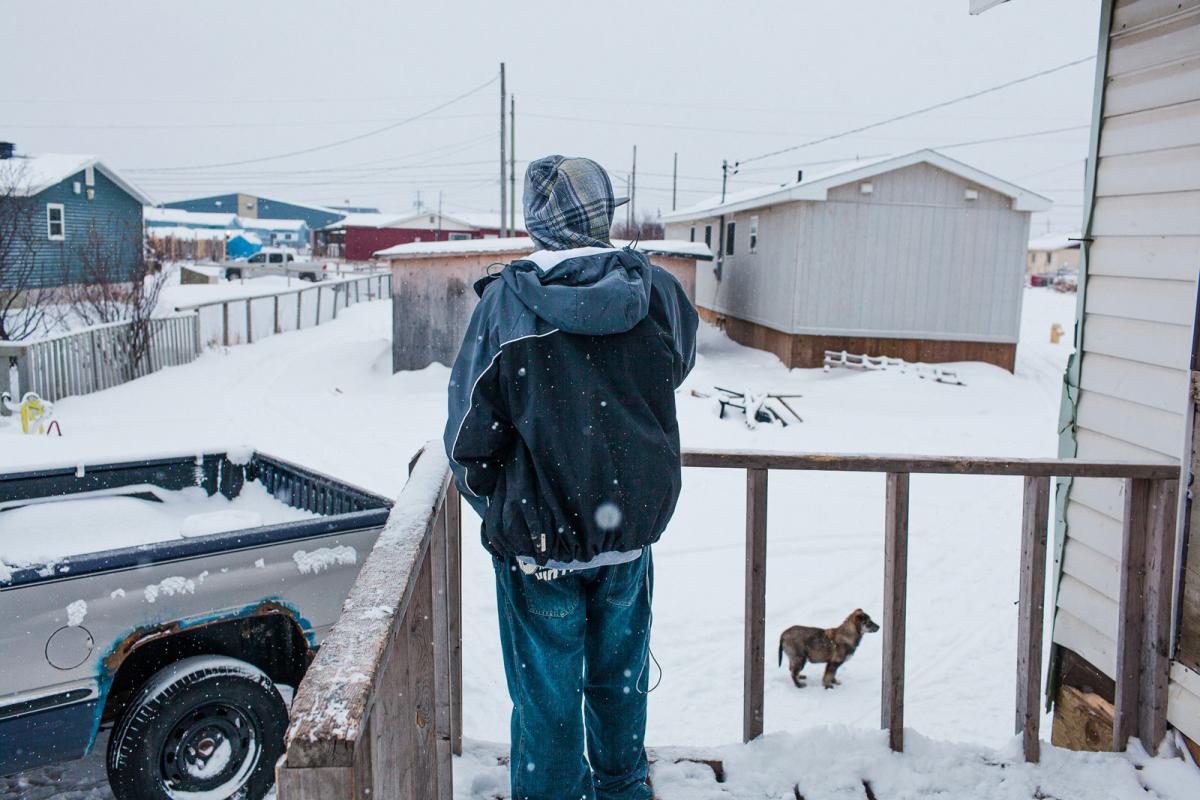
The politicians promised to build a new school, but year after year they broke their promises. So Shannen and her friends launched a school campaign. First they held a demonstration with signs and banners in temperatures of minus 40! Yet no one outside their little town seemed to care. So then they started posting on social media, including YouTube. They showed the situation in their school and urged all the children in Canada to write protest letters to the government. Soon letters started pouring in from children demanding change and equal opportunities for First Nation children.
Cancelled class trip
One day, the elders in Attawapiskat received a letter from the minister in Canada’s government who was responsible at the time for the schools in the reserve. He was the one who had received all the protest letters from children. But his message was that the government did not have any money to pay for a new school.Shannen and her friends lost patience at that point. Their class had saved up for a fun end-of-term trip, but the children decided instead to travel to Canada’s capital city, Ottawa, to explain to the politicians why their school was important. To their surprise, the minister agreed to meet them. He invited them to a meeting on National Indigenous Peoples Day: an annual day to celebrate and recognise First Nations, Métis and Inuit people. Shannen saw this as a positive sign. Maybe they would get some good news...
Meeting the minister
Shannen was 13 when she travelled to the capital, accompanied by some of the elders and parents, who went with Shannen and her friends Solomon and Chris to the grand parliament building. When they entered the minister’s room, he put his hand out and said: “How do you like my office?”Shannen replied immediately that she’d be happy to have a classroom as nice as this. Then the children tried to explain why they were there, but the minister interrupted them straight away and said: “The answer is no”! The government had no intention of building a new school in Attawapiskat.
Everyone looked at one another in shock. The elders started to cry. Shannen cried too, but mostly out of anger. She looked the minister right in the eyes and said the children would never give up! Then they sadly filed out. The elders were still crying. All their lives they’d experienced broken promises from those in power.
Marching for change
Some distance away from the parliament building, thousands of people had gathered from all over Canada to march in a procession in support of the rights of indigenous peoples. The children and elders from Attawapiskat joined the procession; some were holding up signs, while others played drums and sang. Many were dressed in their regalia, large headdresses, dresses with little jingling bells and beaded tunics and moccasins.Several speeches were made outside the parliament building. The organisers asked if any of the children from Attawapiskat could share what had happened in the meeting with the minister. It was decided that Shannen would speak. At first she panicked, but one of the adults calmed her down and said: “Shannen, this is the moment where you need to be heard. Just speak from the heart. You’ll know what to say.”
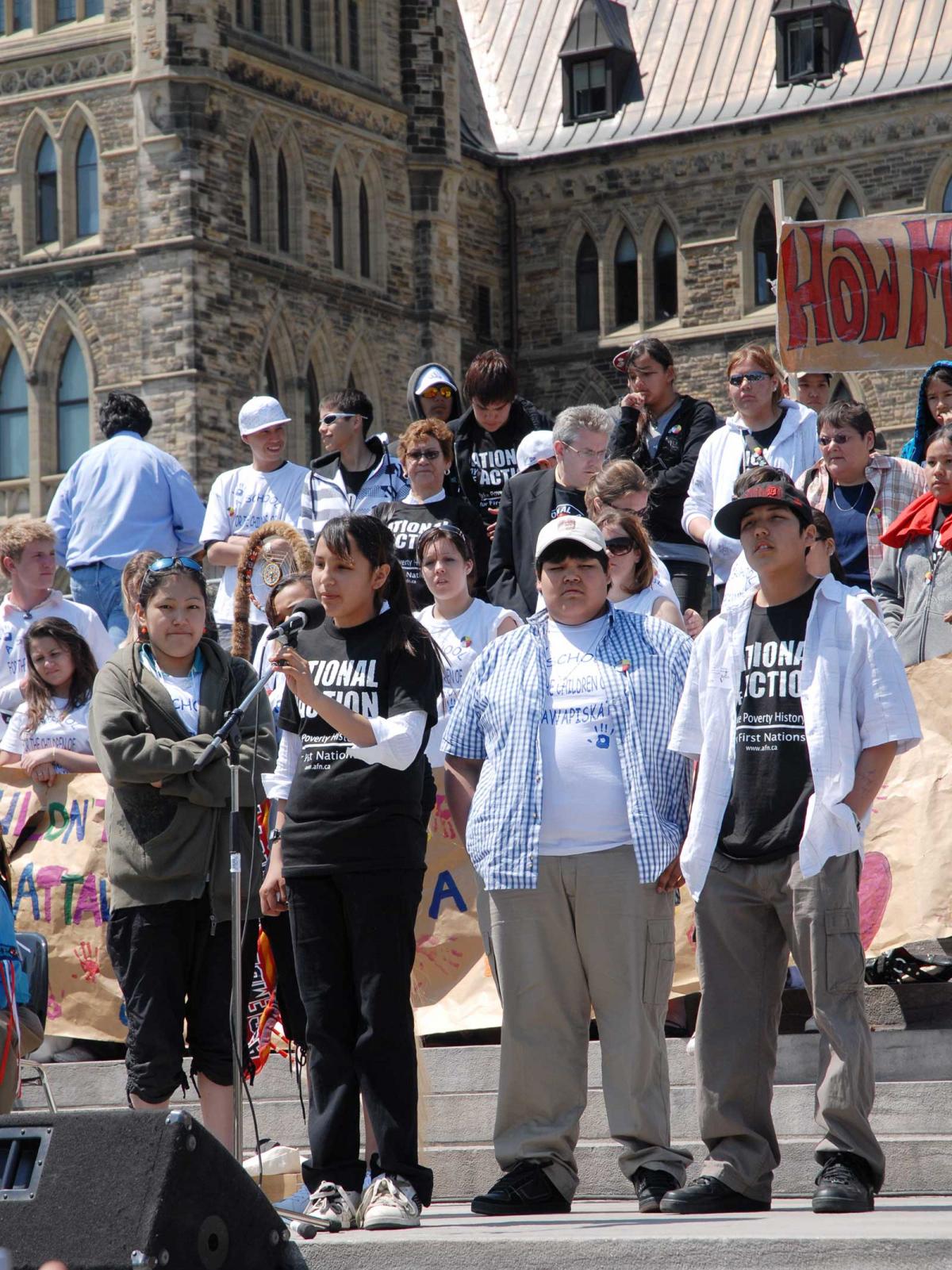
Shannen took the microphone and said: “Hello, everybody, my name is Shannen Koostachin, and I am from the Attawapiskat First Nation. Today I am sad because Mr. Chuck Strahl said he didn’t have the money to build our school … But I didn’t believe him."
The crowds roared and carried on cheering as Shannen explained why she and her friends were there, and that they would never give up. Of the minister, she said: “I could tell he was nervous”.
Afterwards, Shannen was interviewed by newspapers, TV and radio, and she said the campaign would never stop until all First Nations children had proper schools. She kept her promise. Shannen became the leader of the biggest child-led campaign in Canada’s history: Students Helping Students.
Terrible accident
When Shannen was 14, she had to leave her family and move 600 km away to the nearest high school. Her older sister Serena was already there. Shannen had to work hard to catch up with the other students. They hadn’t gone to school in dilapidated portables, and they were way ahead in many subjects. But Shannen didn’t miss a single day of school.On weekends and in the holidays, she, Serena and other children continued to speak at major gatherings and ask for support. They spoke of the mice, the cold and the shortage of school books. The support steadily grew, and Shannen dared to believe that her dreams might come true. Then something terrible happened.
Bad accident
After a year at high school, Shannen was travelling in a minivan that crashed with a big transport truck. She died at the age of just 15.Children all over Canada were devastated, but they were ready to fight. They had no intention of letting Shannen’s dreams die with her. With the help of Cindy Blackstock and her organization, and member of parliament Charlie Angus, a new campaign was launched. It was called ‘Shannen’s dream’, to honour her memory. Shannen’s family, friends and the little town where she grew up also got behind the children’s campaign.
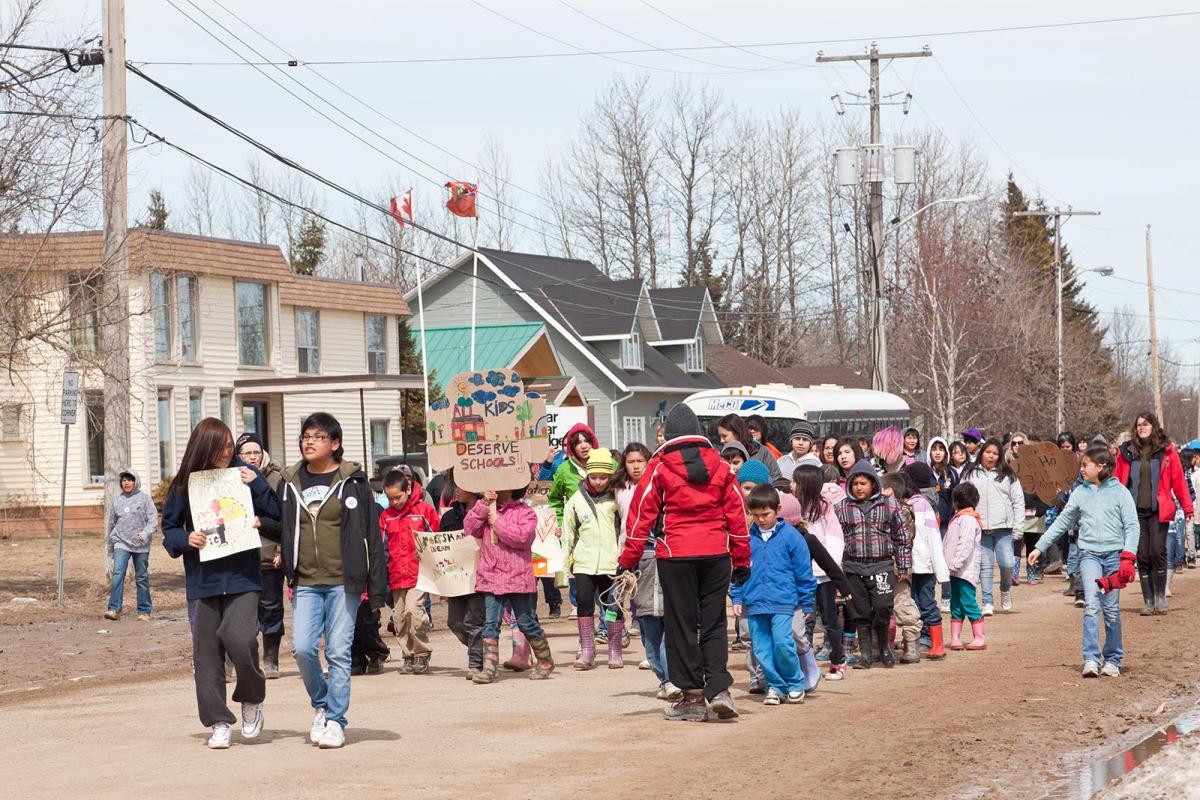
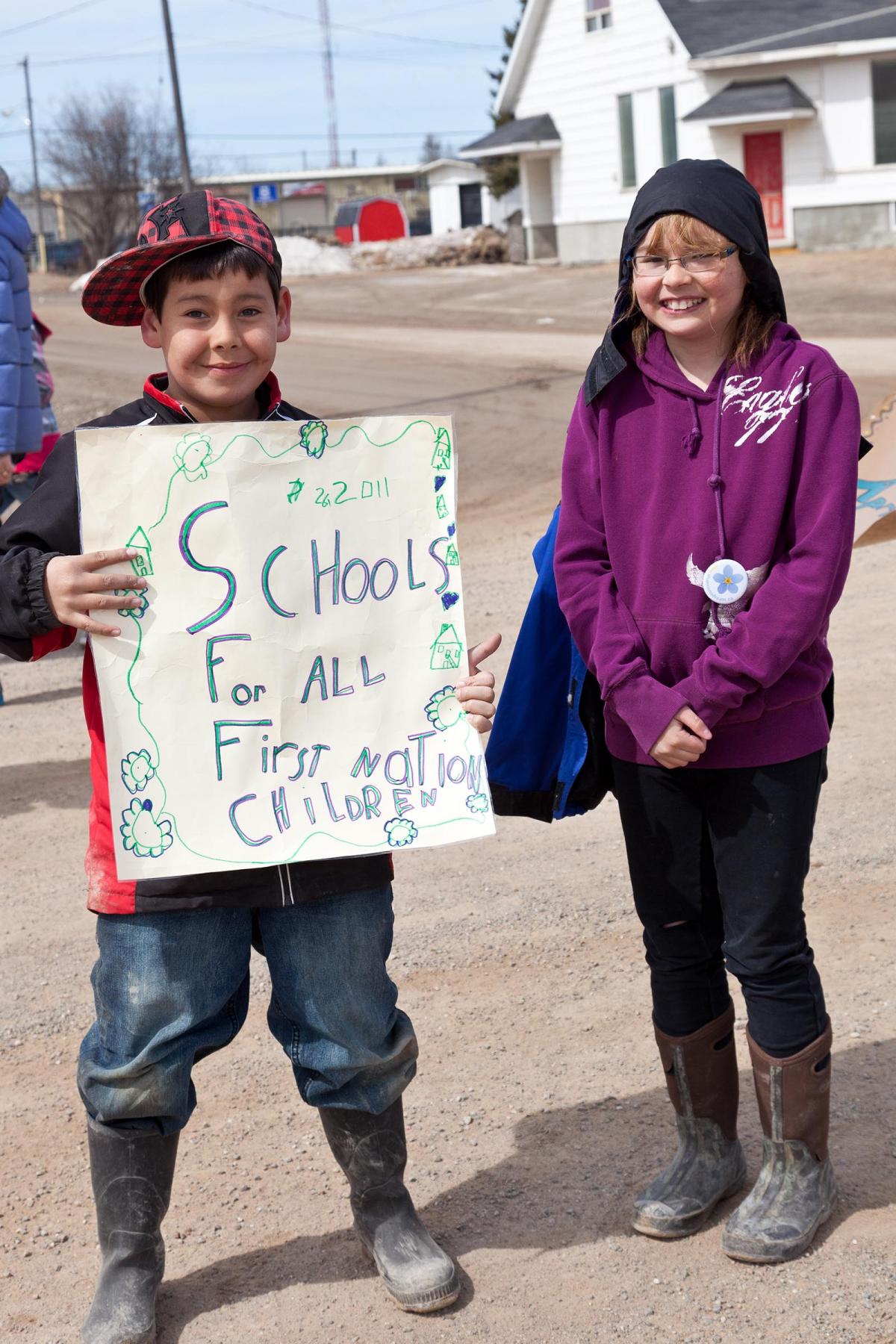

Spirit name
When Shannen died, according to Cree culture she was reunited with the spirits of her forefathers. She was also given a special spirit name, Wawahtay Eskwo, which means Northern Lights Woman.To the UN
Almost two years after Shannen’s death, six youngsters travelled from First Nations to the UN Committee on the Rights of the Child in Geneva, Switzerland. One of them was Shannen’s childhood friend, 16-year-old Chelsea from Attawapiskat First Nation. Cindy Blackstock was also with them. She had pushed for the children themselves to have the opportunity to tell the committee about their difficult school years in Attawapiskat, and about the violations of their rights. In the UN building, the children got to talk to a group of experts, who listened carefully. Everyone was sad that Shannen couldn’t be there, but pleased that experts in children’s rights were taking them seriously.Soon after, a proposal was adopted by politicians in the Canadian House of Commons to make ‘Shannen’s dream’ a reality. A law was created that would guarantee the right to a good education for First Nations children as well. After the vote, their success was celebrated with Shannen’s family, who had travelled to the capital to be there at this historic moment.
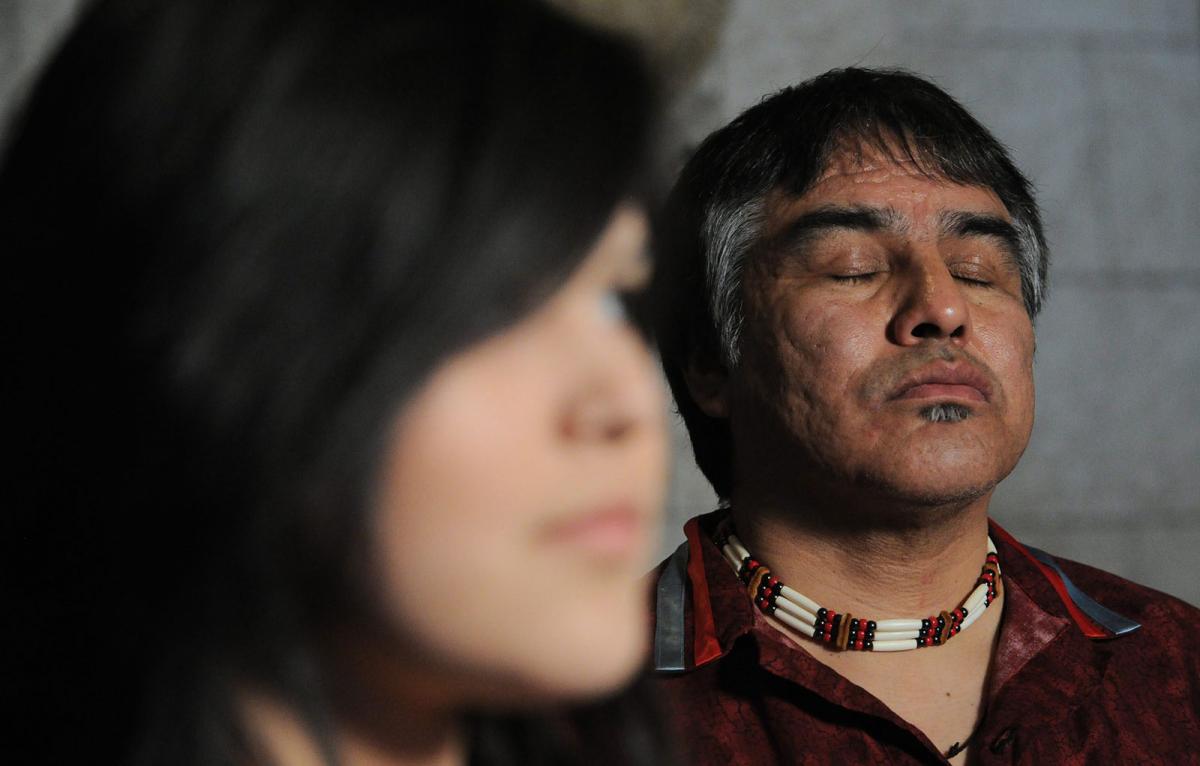
Shannen's father. Andrew, made a speech. He began in the Cree language, then switched to English. “Shannen was a special gift, it was an honour to be her father,” said Andrew. “I always thought I was a teacher for her, but she taught me a lot of things, and she started reaching out to people … When the young people speak, they have power because they’re so innocent, they’re so strong...”
A new school
On the day that Shannen would have graduated from high school, work began on building a new school in Attawapiskat. It opened two years later, and above the entrance a sign in big letters reads: SHANNEN’S DREAM. Photo: Paul Lantz
Children in Canada continue to write letters to the government, because there are still lots of First Nations students who need better schools. Despite the law based on Shannen’s dream, the process of giving all children the education they deserve is slow.
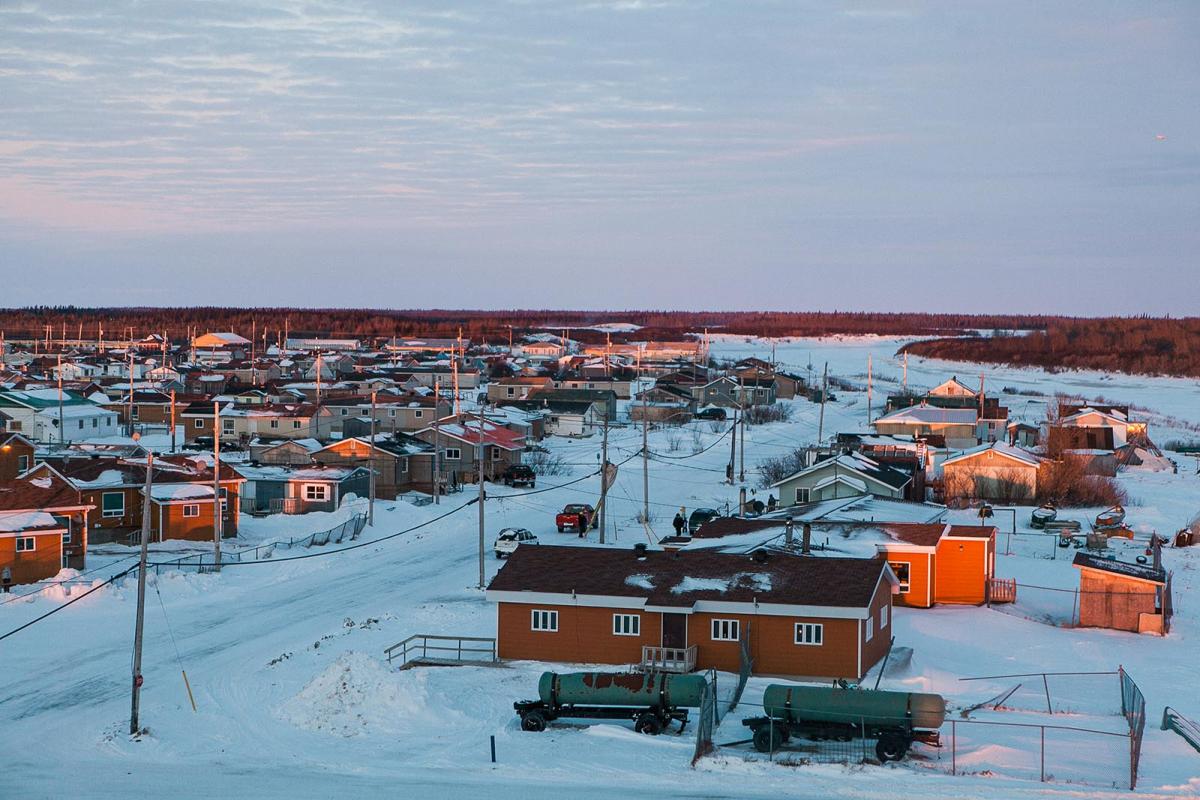
Life in Attawapiskat
In Shannen’s little hometown of Attawapiskat there’s now a lovely new school, thanks to Shannen’s dream. And a new youth centre. But there are still lots of problems. Some families live in dilapidated houses, tents or sheds without insulation, electricity or clean water. The tap water contains hazardous chemicals, so the town’s inhabitants have to fetch their drinking water in town. Now even that water is showing traces of toxic chemicals.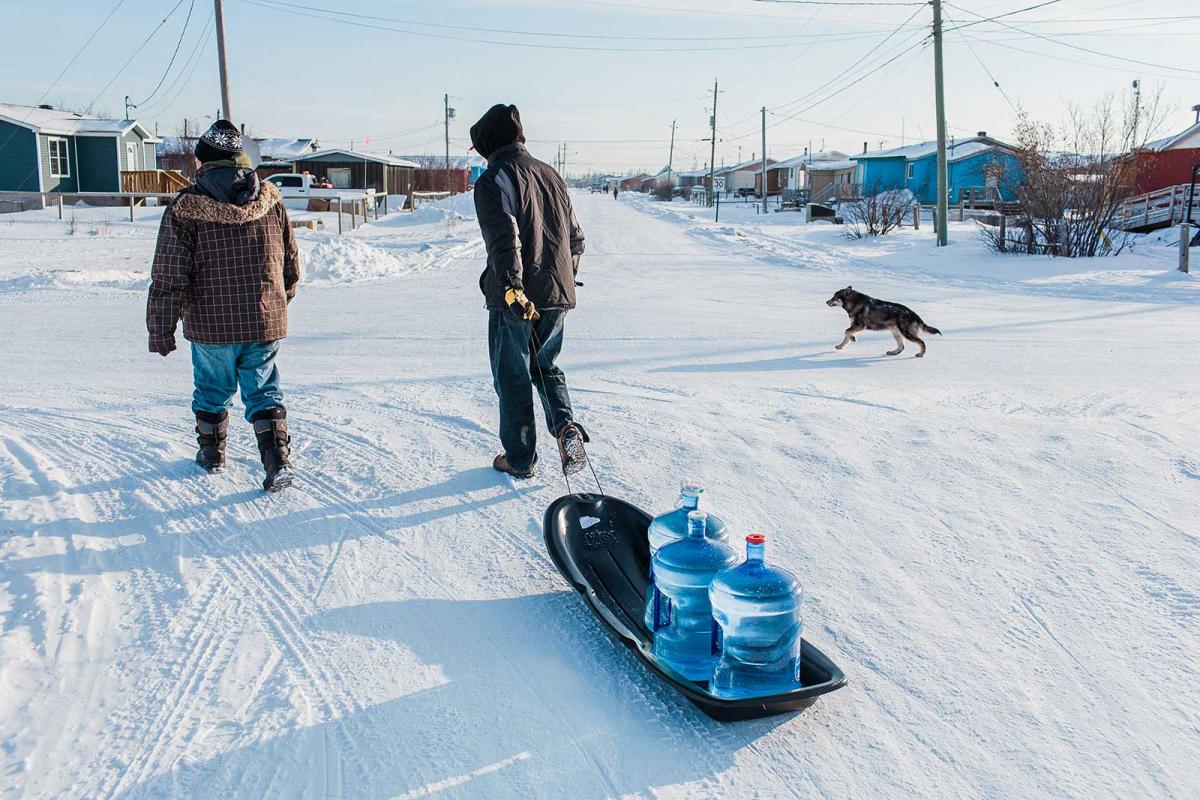
Sometimes the electricity network and sewage system break down. On occasions the town has been flooded by stinking sewage water and sludge. The tough way of life and lack of hope in the future makes both children and adults unhappy. Some drink alcohol or take drugs. And some even take their own lives. It’s far more common for a child from a First Nations reserve to commit suicide than in other parts of Canada. Many, including teachers, parents and leaders in Attawapiskat and other reserves, are fighting hard to help children who are suffering from depression and preventing more suicides.
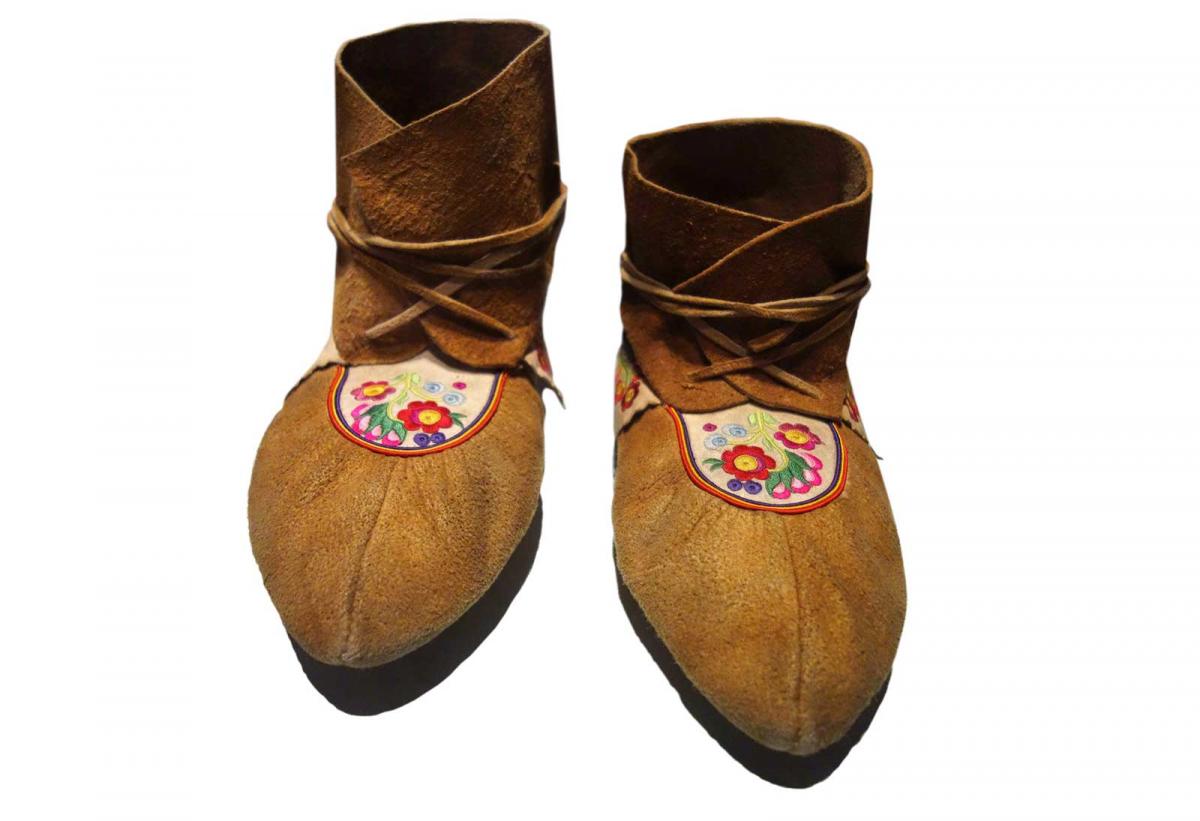
Shannen’s message
“Never give up. You get up, pick up your books and keep walking in your moccasins.” (a type of shoe worn by First Nations people)!TEXT: Carmilla Floyd
Långgatan 13, 647 30, Mariefred, Sweden
Phone: +46-159-129 00 • info@worldschildrensprize.org
© 2020 World’s Children’s Prize Foundation. All rights reserved. WORLD'S CHILDREN'S PRIZE®, the Foundation's logo, WORLD'S CHILDREN'S PRIZE FOR THE RIGHTS OF THE CHILD®, WORLD'S CHILDREN'S PARLIAMENT®, WORLD'S CHILDREN'S OMBUDSMAN®, WORLD'S CHILDREN'S PRESS CONFERENCE® and YOU ME EQUAL RIGHTS are service marks of the Foundation.

